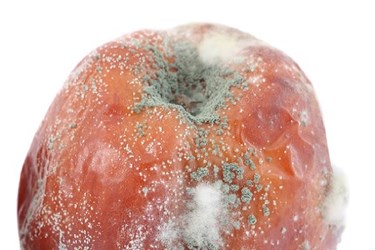Temperature-Monitoring Technologies Are Solving Food Spoilage Dilemmas
By Melissa Lind, contributing writer

With today’s consumers demanding a greater variety of fresh foods to be available year-round, the food-supply chain becomes more and more complex. Fresh foods coming from distant locales demand attention to safety as spoilage is both a threat to consumer safety and a threat to profit margins. Consequently, accuracy in temperature maintenance is a must in tracking food from harvest to consumer.
Recent Centers for Disease Control and Prevention (CDC) statistics show that there are over 250 foodborne illnesses affecting one in six consumers in the U.S. each year. Obviously, food suppliers, processors, and manufacturers want safe products reaching customers, but sometimes spoilage interferes with that. Not only is food spoilage an obvious safety risk, but it has financial ramifications for the food supplier. Both the safety risk and financial consequences of spoilage can lead to regulatory fines, a lack of consumer confidence, and in worst-case scenarios, business closure.
Wireless Temperature Monitoring Cuts Cost Of Loading Refrigerated Trucks
Aside from safety issues, consumers expect food products to be attractive in terms of look, taste, and smell. Higher-quality products keep customers coming back, but if food quality is not maintained during transport and storage, much of it may be lost to spoilage as it won’t appeal to consumers’ desires Regulatory authorities have put legislation such as FSMA in effect to shift the focus from reaction to prevention. This has required the industry to create new ways to address food contamination and safety issues in a proactive manner by monitoring of the entire cold chain and to identify at what specific points the systems may fail.
What’s The Impact Of Big Data On The Cold Chain?
Fortunately, the industry continues to evolve. Temperatures are now able to be monitored with data solutions that increase efficiency and transparency through the whole, food-supply chain. Temperature-monitoring solutions can help solve issues and complete a variety of activities to further safety and quality with an easy user interface that is operated in a low-tech manner to:
- Determine whether shipments should be accepted or rejected
- Determine shelf-life or the need for price reductions to move product
- Identify specific moments and locations that may be causing decreased quality
- Allow for transparency and accountability across the entire food-supply chain for performance improvement
Today, the food industry’s cold chain has economical and reliable solutions to use data analysis from monitoring devices that can send real-time data to enable issues to be instantly addressed. This data can be integrated with other systems and events to improve the entire process. Cloud-based technology solutions help manufacturers, processors, and suppliers enable delivery of a safe, quality product through a complex supply chain.
